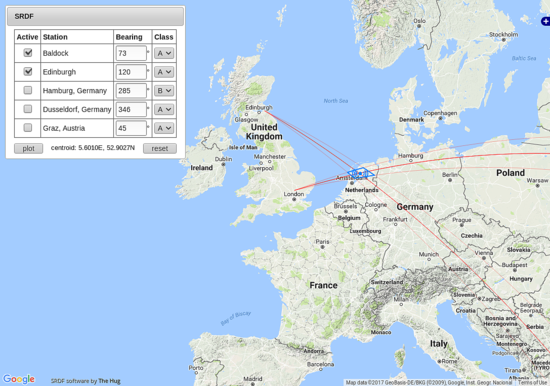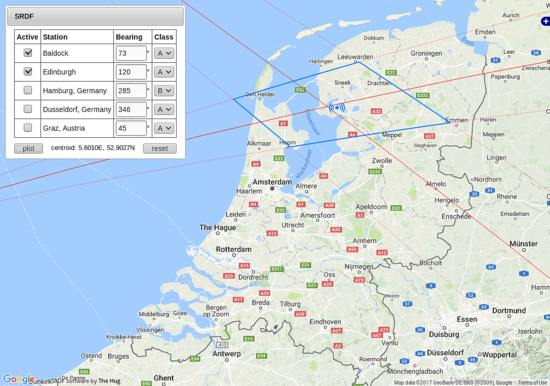Mapping Direction Finding for Ofcom
Written 23/02/17
In their role as regulator and interference resolution service of the nation's radio waves Ofcom use super-resolution direction finding (SRDF) equipment to try to locate high frequency (HF) transmitters which are causing issues. HF travels around the world so they often do this in association with their partner organisations in other countries who have similar equipment.
Ofcom came to us with a requirement to visualise the data they were getting on a map and we've just delivered that to them.
Here's a typical example of it in operation. They are trying to identify the location of an HF transmitter which they can hear from their SRDF equipment at Baldock and Edinburgh. Baldock report a bearing of 73° and Edinburgh 120°. Both of these bearings are from class A SRDF receivers so the error is ±1%.
Our application is web based and so runs in their browser. They enter the two bearings they have and click the button for a first plot. Here's a screen shot of how it looks (apologies for the reduced image size, click on any image below to see it full size).
The two SRDF station bearing are shown in red along with the maximum error bearings on each side and where they cross a polygon is marked in blue. All of these lines are great circles of course so, as we're projecting this onto Google Maps, they are displayed here as shallow curves.
The blue polygon is pretty small on the first map but when you zoom in you can see the area in more detail - it's in the Netherlands - and the polygon centroid is shown.
That's still quite a large area though, which is where Ofcom's partners come in. By adding a bearing from an SRDF station near Dusseldorf the polygon is considerably reduced in size, as this final screen shot shows.
We wrote this application for Ofcom in JavaScript using the OpenLayers library to interface with Google Maps. Doing it this way, rather than writing a program which runs on their PCs, gives them lower cost of ownership in that the software is on one web server - the user's PC just need a web browser. For the same reason it's also future proof against changes to the underlying user PC operating system.
| « | » |



